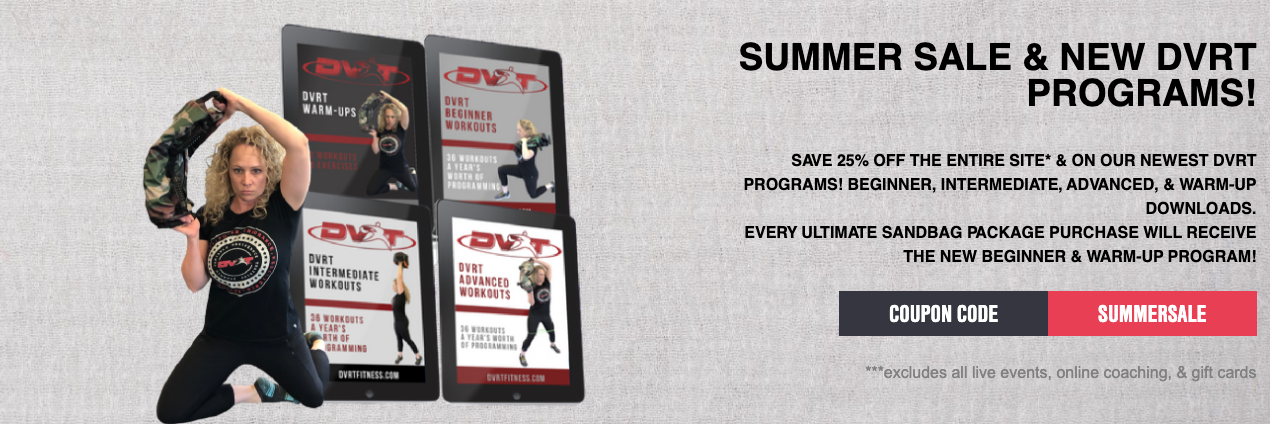Are You Ready for Loaded Carries?
2019-08-5
Save 25% ALL Throughout DVRT With Code “summersale” HERE. Any Purchase Of An Ultimate Sandbag Comes With Our NEW Beginner & Warm-up Programs. Check Out Our New Beginner, Intermediate, & Advanced Programs For 25% Off HERE!
It seems so obvious, yet, almost no one talks about it. We would never allow ourselves to keep training bad squats, deadlifts, push-up, lunges, pull-ups, pretty much any exercise right?! When it comes to performing loaded carries we don’t use the same logic in examining how people perform. Why is that?
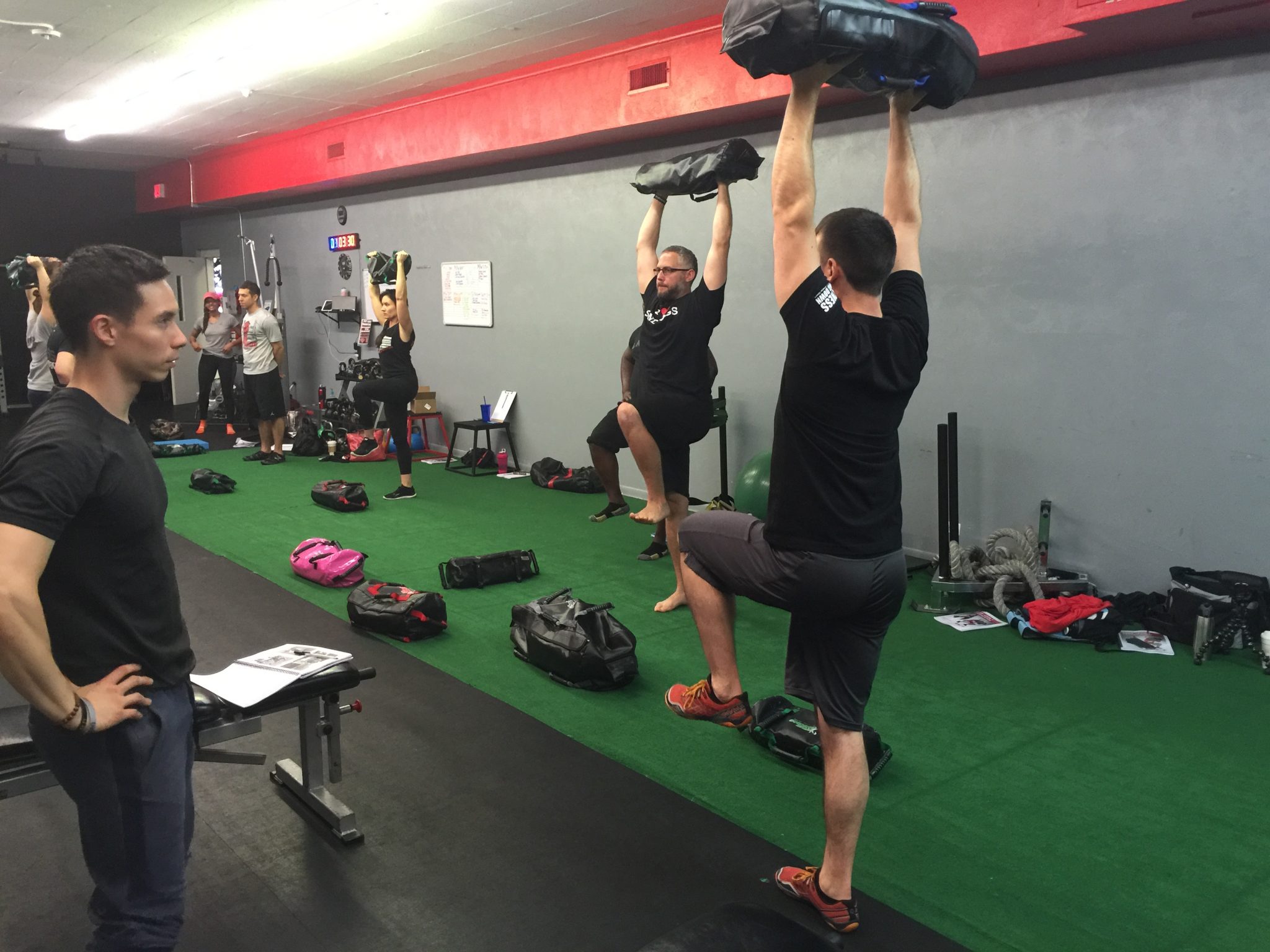
Trust me, I’ve asked the question many times and I have yet to come up with any really good answers, nor have I received any. That leads me to only one explanation, we don’t understand very well how people walk as an industry. Don’t get me wrong, there are many research studies looking at human locomotion, but take almost any fitness certification and there is none to very little discussion about walking.
Most everyone we work with in fitness can walk, so why care? Well, everyone can squat, hinge, lunge, push, pull, etc., but they don’t necessarily do it well. Watch people in public for a few minutes and you will be astonished at how many people walk badly. Sure, they get from point A to point B, but HOW they do so isn’t great.
Who cares? After all, who got “jacked” from walking? The reason I keep taking so much back to looking at how we walk is we can trace so many injuries and even lack of progress in our training to how well or not we walk. That is because walking is one of our most complex actions (running probably even more so) and yet, we are the least informed about the basics of walking. Doesn’t seem to make sense does it?
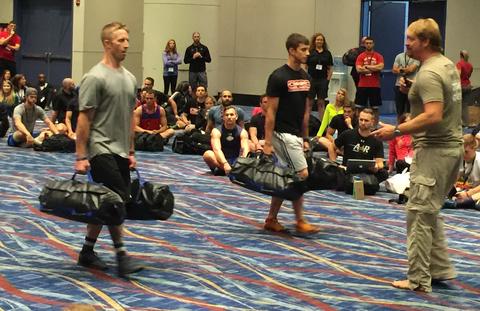
Not being so philosophical, we can look at issues that cause our training to stall and set us up for issues like in the knees, low back, and shoulders just by taking time to look at how we walk. That’s right, loaded carries CAN be a good exercise for some, but not all. At least not until we look at ways to build the walking pattern first!
Without going into the very complex rabbit hole of gait analysis, let’s try to pick out things that we can immediately look at and have confidence in what we are seeing. These are issues we want to examine BEFORE we move to loaded carries and helps us understand why building that foundation is so essential.
-Feet/ankles: There are specialists that look ONLY at this area of the body, so we know it is important. It is where force first enters our body so you can imagine not having the proper use of the feet/ankles would cause major issues throughout our entire body. Imagine what happens in our loaded carries if the foundation of our movement is off?!
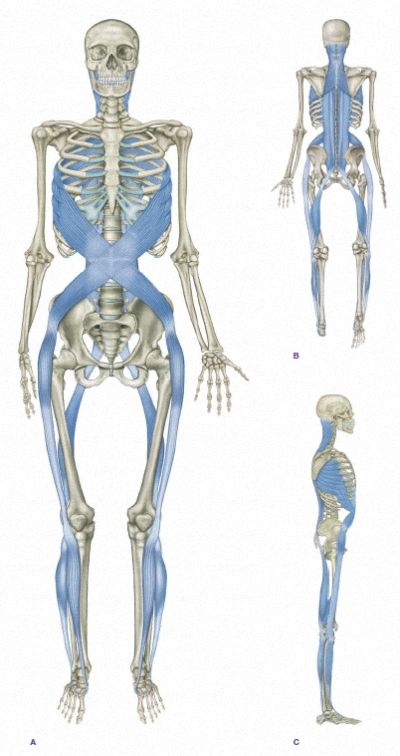
Through concepts like the spiral fascial line, we can see how the feet impact from the ground all the way up the body!
-Pelvis: Outside of the feet/ankles, I would probably say that the pelvis is our foundation for the body. It helps connect the upper and lower body, it is how we transmit force efficiently, our pelvis is where much of our core issues show themselves. Being able to take a quick look at possible compensation of the pelvis can tell us a lot about your movement.
What we see in exercises like dead bugs and hip bridges allows us to see how the pelvis functions even at low level environments. This is perfect to start teaching how to stabilize the pelvis before we get to more complex movements. Great coaching from Megan Berner.
-Shoulders: If we are looking at walking itself we could start discussing issues like arm swing, but that can get a bit complicated too (sometimes lack of arm proper pelvic stability and leg movement will result in too little or too much arm swing). In our efforts to keep this as simple, but meaningful as possible, let’s just look at shoulder height to start.
We can all pretty much look to see if the shoulders look level or not, does one look rotated forward to another? Combined with what we see at the other two areas of the body we can first simply look to see if exercises like loaded carries are really good for us or not.
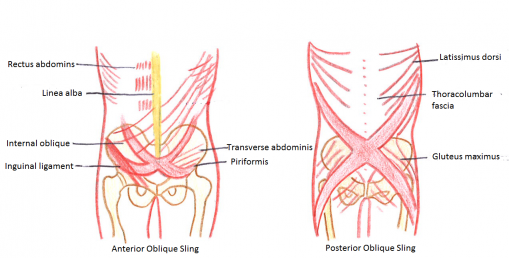
Only if the chains are working at their highest level do we make loaded carries look seamless and efficient.
The goal is not to diagnose any dysfunction, but to identify exercises that may not help our goal. So, what if these areas of the body DO look off? Where do we start? The answer is simple….the beginning.
Exercises like dead bugs are such a foundation of what we do in DVRT because it is the start of looking and training the gait pattern. Before we ever think about performing loaded carries where not only is our body under load, but we are moving in a very unstable environment, we want to see if we can produce many of the foundational concepts of good locomotion in a more stable arena. Can’t get any MORE stable than back on the ground.
At the same time we can start to look where so many people lack strength in the gait pattern and actually causes major issues in their loaded carries….lateral strength. That starts largely with our side plank series, but as Jessica will explain, there are many nuances and keys of the side plank that we look for that most flat out miss!
https://www.instagram.com/tv/B0io9Shn8gT/
Both dead bugs and side planks can be progressed via many different drills, but eventually we want to get to training in more relatable environments. For dead bugs that means transferring to exercises like bird dogs where we have to fight more gravity and our own body weight to produce the same motions we look for in the dead bug. The side plank starts to be moved to half kneeling and eventually lunging variations that all have direct tie in to making those loaded carries so much more effective. Marching then plays a bigger role and should proceed any true carries as it will expose some MAJOR issues in our carrying strength.
https://www.instagram.com/p/BuBqRvaBSCr/
Once we have spent considerable time with these foundations (which are much more challenging than people think when they do them with great purpose), we are ready for loaded carries right? Not quite! What I break down in today’s video is a great example of how there is more to construct if we want to actually get the results from a complex exercise like loaded carries (hopefully it is becoming clear that loaded carries are far more sophisticated than people believe). When we look deeper, we don’t just get far more exercises, we get superior solutions!!!
https://www.instagram.com/tv/B0lLm_En952/
© 2026 Ultimate Sandbag Training. Site by Jennifer Web Design.

